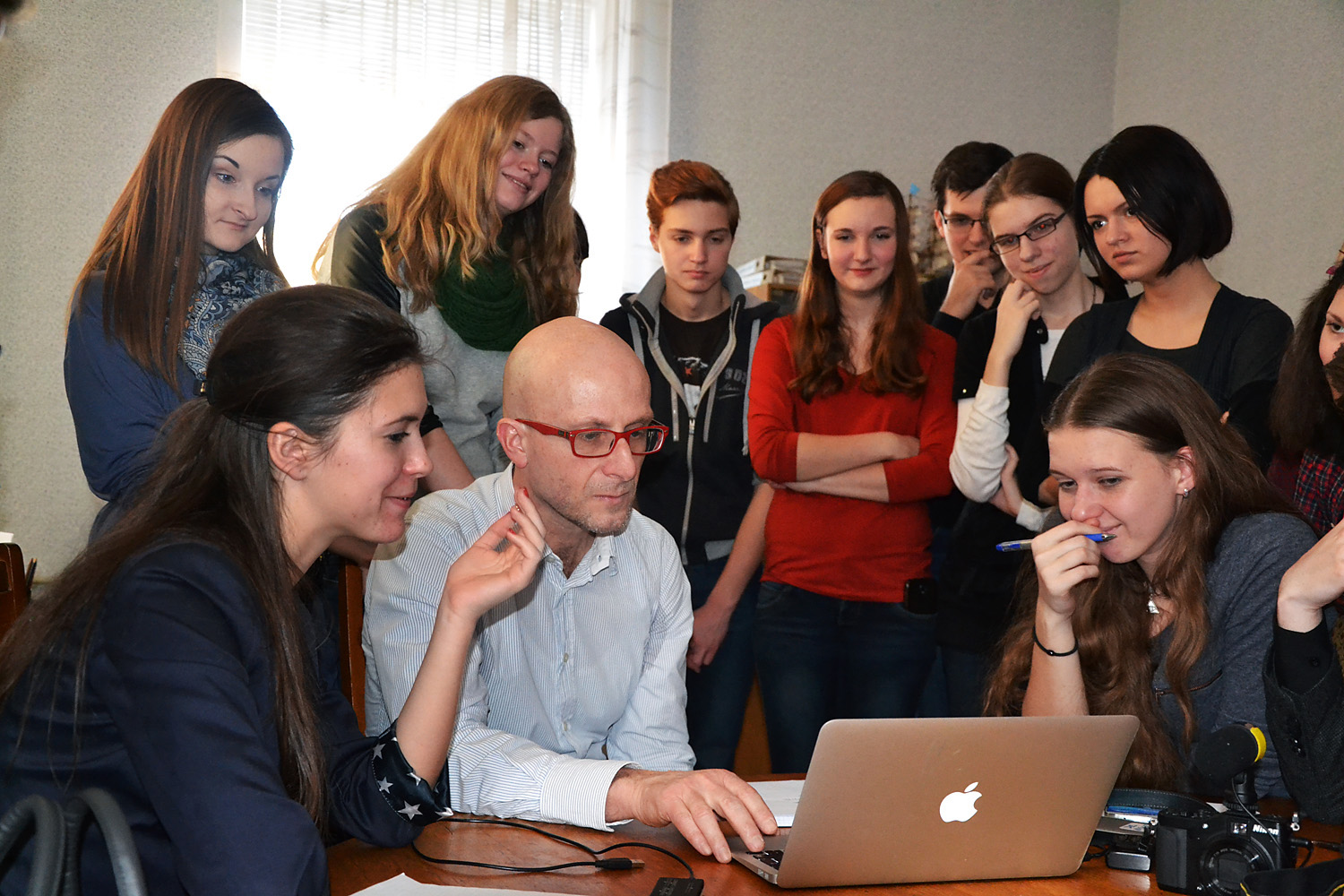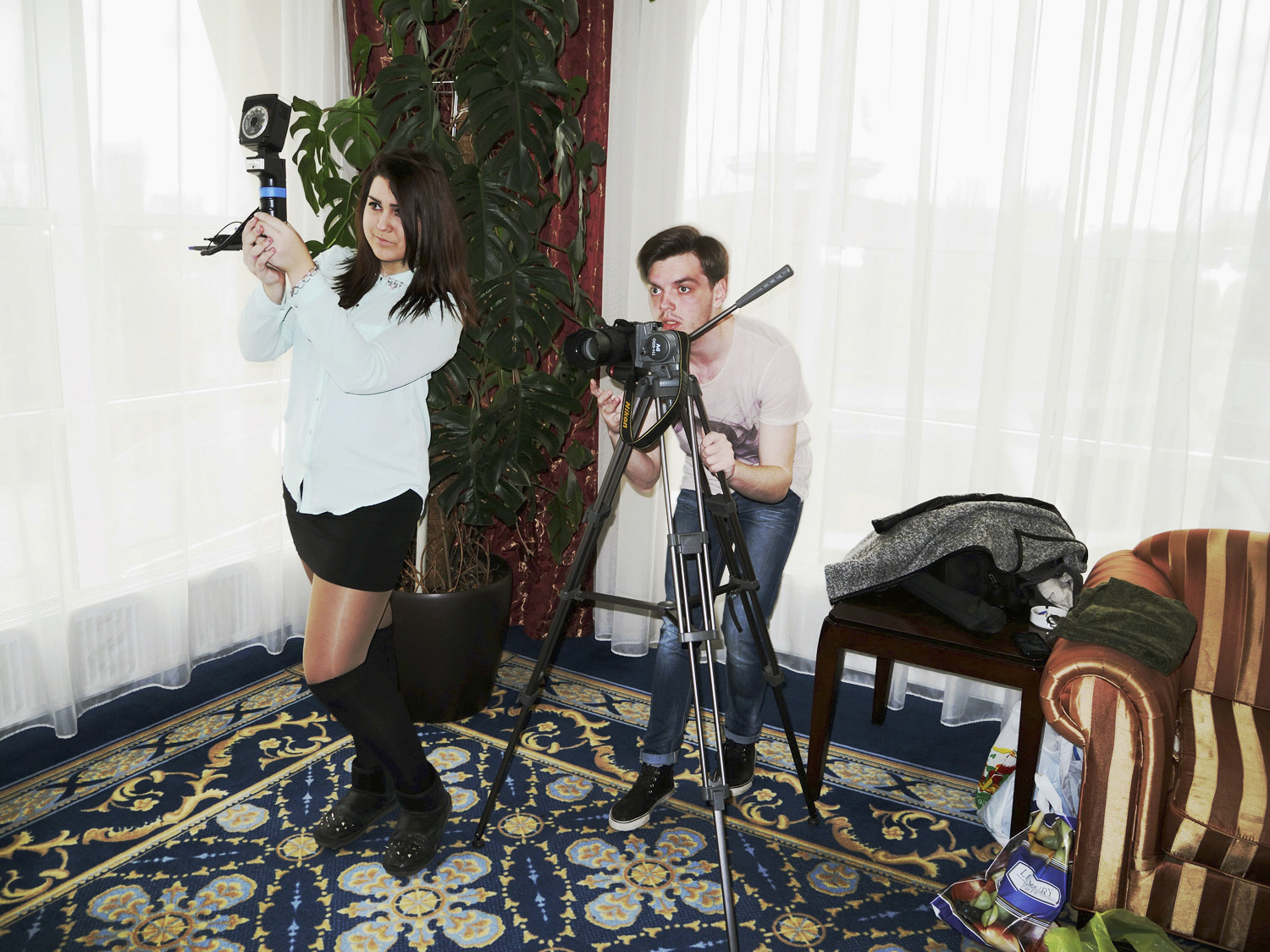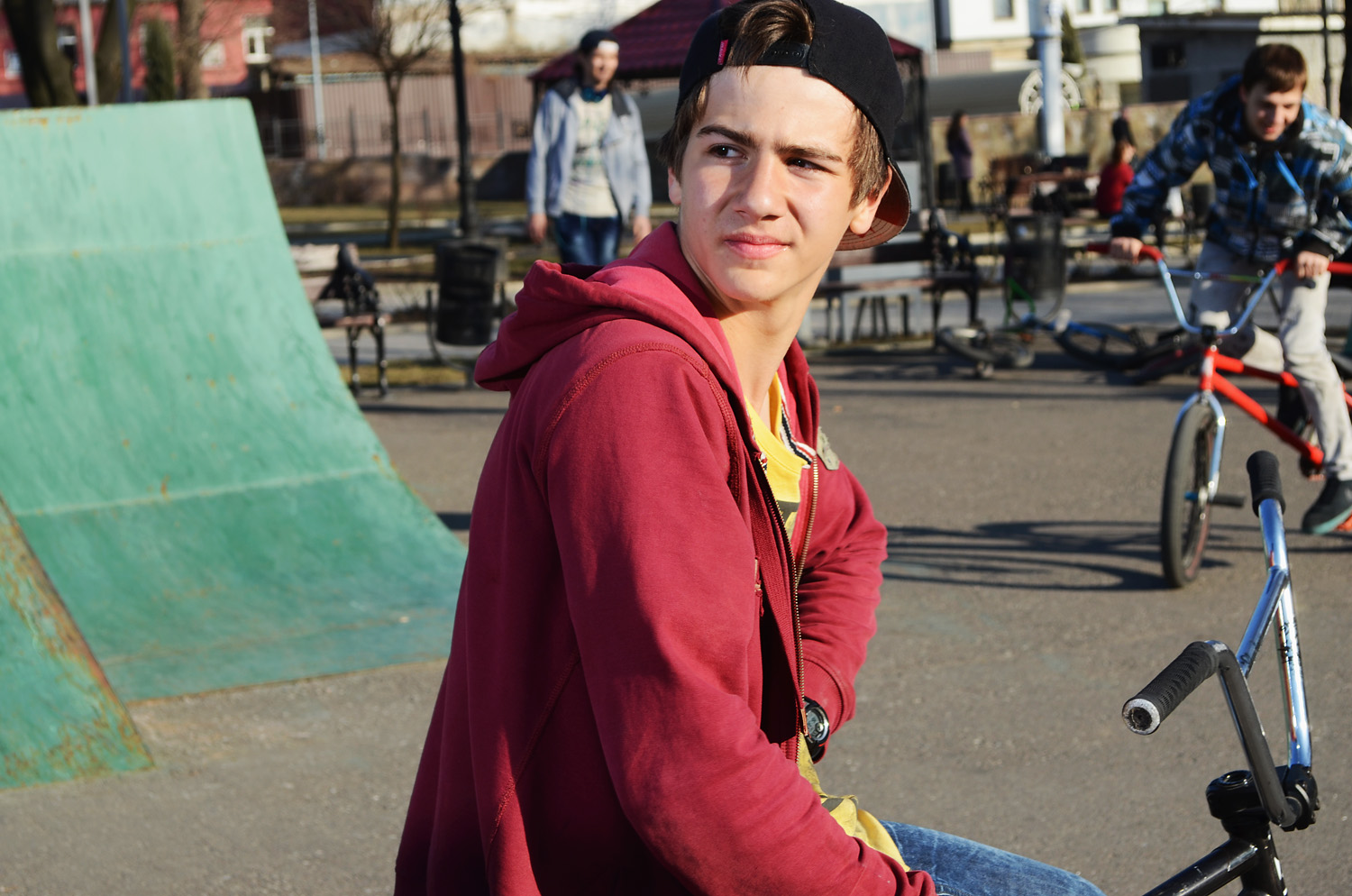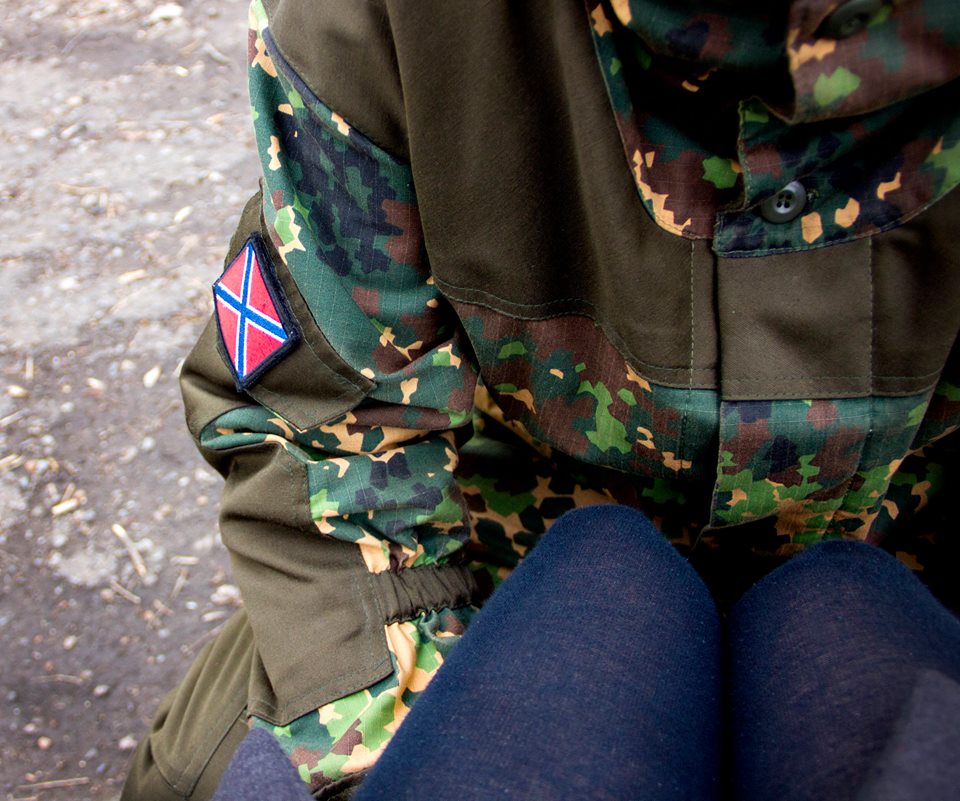EN
Text written by me for the photography magazine PHOTO to mark the beginning of our new collaboration.
The Russian aggression on Ukraine was launched almost a year ago.
The flood of images inundating the media and social networks has not stopped, relaying the armed one-upmanship that has so far not led to any peaceful outcome.
Images taken from GoPro cameras carried by the best equipped soldiers, life and death in trenches worthy of a new Verdun, are relayed by drones that are as much voyeurs as killers, a new dimension is reached in the domestication of horror.
The fiction of video games meets reality, and putrefaction is served to you on your smartphone right in your gym or on the slopes of Val d’Isère.
There is a photographer that the PHOTO editorial staff has known for decades and who, while being one of the best connoisseurs of the former Soviet Union, keeps his distance (some would say he runs away from it) from the media hubbub.
For Eric Vazzoler has been visiting Ukraine since 1994, without ever having taken an interest in the disaster-stricken site of Chernobyl, in the events of Maïdan in 2014, or in the Femens movement.
He prefers, when he is not doing so for the press, to photograph in black and white the marginal youth of a country in slow decomposition and riddled with corruption: orphans, prostitutes, prisoners, neo-Nazis, etc.
Because he divides his time between commissions, residencies and, since 1996, workshops for underprivileged youth**, with the beginning of the war between Ukraine and Russia, he began to conduct workshops on both sides of the front line in 2015. Workshops that PHOTO.fr widely reported on at the time.
Eric has just arrived in Marioupol, in this martyred city which is no longer mentioned at the moment, but which, as long as a new massive winter offensive is not launched, remains the symbol of the hatred between two peoples that nothing separated until the fall of the Berlin Wall and a new geopolitical redistribution.
And, if Marioupol remains the safest city of the Donbass at the moment, PHOTO.fr will publish in the next few weeks, the photographs made by about twenty teenagers and students of the strategic port of the Azov Sea.
Eric wants to make a film from this adventure, which he initiated and is leading alone, and which could be presented at Visa pour l’Image next September.
Support Pics for Peace on social networks.
Because when a lasting peace is achieved, Eric’s ambition is to modestly contribute to bringing together young people who are far apart because of the blindness of their elders.
When a critical eye becomes the stake of a reconciliation.
http://www.photo.fr/articles/blog
FR
Texte rédigé par mes soins pour le magazine de photographie PHOTO afin de marquer le début de notre nouvelle collaboration.
L’agression russe sur l’Ukraine fut lancée, cela fait déjà bientôt un an.
Le flot d’images inondant média et réseaux sociaux, n’a pas cessé, relayant la surenchère armée qui ne conduit, jusqu’à présent, à aucune issue pacifique.
Des images prises des GoPro embarquées par les soldats les mieux équipés, la vie et la mort dans des tranchées dignes d’un nouveau Verdun, sont relayées par des drones autant voyeurs que tueurs, une nouvelle dimension est atteinte dans la domestication de l’horreur.
La fiction des jeux video rejoint la réalité, et la putréfaction vous est servie sur votre smartphone jusque dans votre salle de gym ou sur les pistes de Val d’Isère.
Il est un photographe que la rédaction de PHOTO connait depuis des décennies et qui, l’air de rien, tout en étant un des meilleurs connaisseurs de l’ancienne Union Soviétique, garde ses distances (certains diront qu’il les fuit) vis-à-vis du brouhaha médiatique.
Car Éric Vazzoler se rend en Ukraine depuis 1994, sans jamais s’être intéressé au site sinistré de Tchernobyl, aux événements de Maïdan en 2014, ni se faire l’écho du mouvement des Femens.
Il préfère, quand il ne le fait pas pour la presse, photographier en noir et blanc les jeunesses marginales d’un pays en lente décomposition et rongé par la corruption : orphelins, prostituées, prisonnières, néo-nazis etc.*
Parce qu’il partage son temps entre des commandes, des résidences mais aussi depuis 1996 des ateliers pour les jeunes défavorisés**, avec les débuts de la guerre entre l’Ukraine et la Russie, il commença à mener en 2015 des workshops des deux côtés de la ligne de front. Workshops dont PHOTO.fr s’est largement fait l’écho à l’époque.
Éric vient d’arriver à Marioupol, dans cette ville martyr dont il n’est plus question en ce moment, mais qui, tant qu’une nouvelle offensive massive hivernale n’est pas déclenchée, reste le symbole de la haine entre deux peuples que rien ne séparait jusqu’à la Chute du Mur de Berlin et une nouvelle redistribution géopolitique.
Et, si Marioupol reste la ville du Donbass la plus sûre du moment, PHOTO.fr publiera dans les prochaines semaines, les photographies faites part par un vingtaine d’adolescents et d’étudiants du port stratégique de la mer d’Azov.
Éric veut, de cette aventure qu’il initie et mène seul, faire un film qui pourrait être présenté à Visa pour l’Image en septembre prochain.
Soutenez-les Pics for Peace sur les réseaux sociaux.
Car quand une paix durable sera là, Éric a l’ambition de contribuer modestement à rapprocher les jeunesses éloignées l’une de l’autre, par l’aveuglement de leurs ainés.
Quand l’oeil critique deviendra l’enjeux d’une réconciliation.
http://www.photo.fr/articles/blog
RU
Российская агрессия на Украину началась почти год назад.
Поток изображений, заливающих СМИ и социальные сети, не прекращается, передавая вооруженное противоборство, которое до сих пор не привело ни к какому мирному исходу.
Текст, написанный мной для фотожурнала PHOTO в честь начала нашего нового сотрудничества.
Кадры, снятые на камеры GoPro, которые носят с собой наиболее экипированные солдаты, жизнь и смерть в окопах, достойных нового Вердена, передаются беспилотниками, которые являются такими же вуайеристами, как и убийцы, и достигается новое измерение в одомашнивании ужаса.
Фантастика видеоигр встречается с реальностью, и гниение подается вам на смартфон прямо в вашем спортзале или на склонах Валь-д’Изера.
Есть фотограф, которого редакция PHOTO знает уже несколько десятилетий и который, будучи одним из лучших знатоков бывшего Советского Союза, держит дистанцию (некоторые сказали бы, что он бежит от нее) от шума СМИ.
Эрик Ваццолер посещает Украину с 1994 года, не интересуясь ни Чернобыльской катастрофой, ни событиями Майдана в 2014 году, ни движением Femens.
Он предпочитает, когда не делает это для прессы, фотографировать в черно-белых тонах маргинальную молодежь страны, которая медленно разлагается и погрязла в коррупции: сирот, проституток, заключенных, неонацистов и т.д.
Поскольку он делит свое время между комиссиями, резиденциями и, с 1996 года, мастерскими для обездоленной молодежи**, с началом войны между Украиной и Россией он начал проводить мастерские по обе стороны линии фронта в 2015 году. О семинарах, о которых PHOTO.fr широко рассказывал в то время.
Эрик только что прибыл в Мариуполь, в этот город-мученик, о котором сейчас уже не говорят, но который, пока не начнется новое массированное зимнее наступление, остается символом ненависти между двумя народами, которые ничто не разделяло до падения Берлинской стены и нового геополитического передела.
И, если Мариуполь на данный момент остается самым безопасным городом Донбасса, PHOTO.fr в ближайшие несколько недель опубликует фотографии, сделанные примерно двадцатью подростками и студентами стратегического порта Азовского моря.
Эрик хочет снять фильм об этом приключении, которое он инициировал и ведет в одиночку и которое может быть представлено на Visa pour l’Image в сентябре следующего года.
Поддержите проект Pics for Peace в социальных сетях.
Потому что, когда будет достигнут прочный мир, амбиции Эрика будут скромно способствовать сближению молодых людей, которые отдалились друг от друга из-за слепоты старших.
Когда критический взгляд становится ставкой на примирение.
http://www.photo.fr/articles/blog





